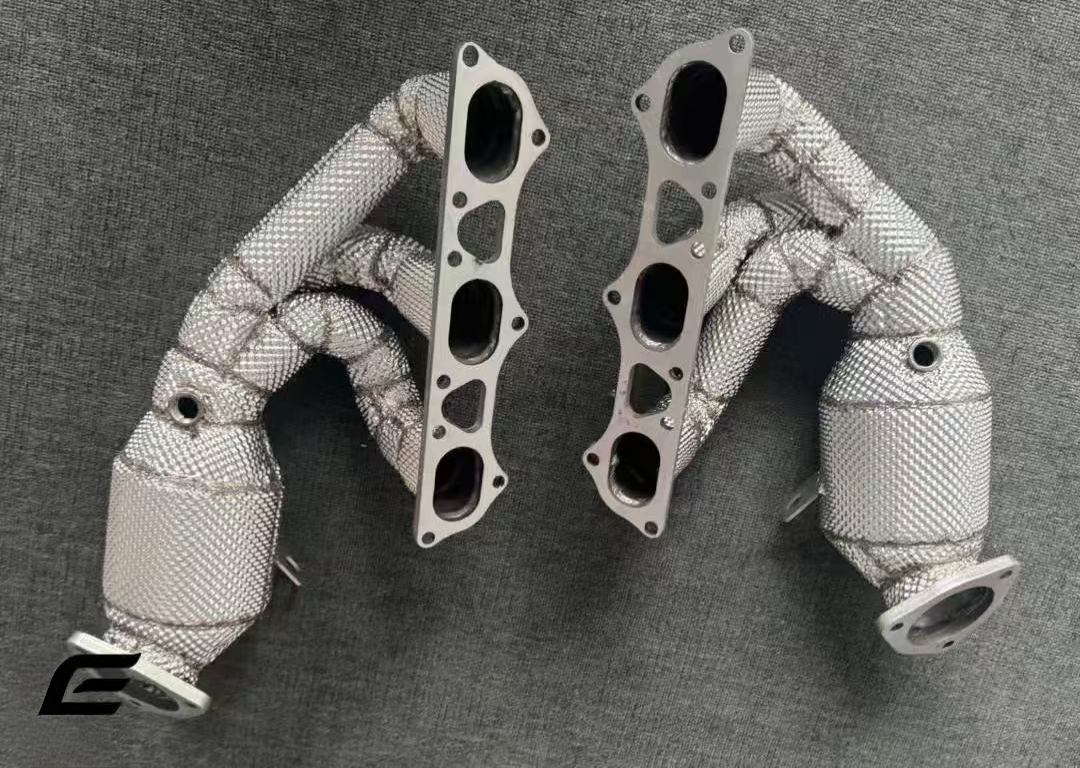 +86 17870576410
+86 17870576410 The Advantages of Stainless Steel Material For Car Exhaust System
Our car exhaust pipe system are usually made of stainless steel or titanium alloy.Compare with titanium alloy exhaust pipe, The stainless steel automotive exhaust will be much cheaper,as the stainless steel material is much cheaper, what’s more, the stainless steel can be bent by machine. Today would like to introduce the advantages of stainless steel material for car exhaust pipe.
To understand the advantages of using stainless steel for automotive Exhaust Pipes, we can explore its durability, performance, and environmental benefits. Here’s a detailed introduction.
Exceptional Durability and Corrosion Resistance
One of the primary benefits of stainless steel in automotive exhaust systems is its remarkable durability. Unlike traditional mild steel, stainless steel contains chromium, which forms a passive oxide layer on the surface. This layer acts as a shield, preventing oxygen and moisture from reaching the base metal, thereby significantly reducing the risk of rust and corrosion. In automotive applications, exhaust pipes are constantly exposed to harsh conditions, including acidic condensation from combustion byproducts, road salt, and moisture. Stainless steel's corrosion resistance ensures a much longer lifespan, reducing the frequency of replacements and maintenance costs over the vehicle's lifetime. For example, in regions with frequent snowfall where roads are heavily salted, Stainless Steel Exhaust Pipes outlast their mild steel counterparts by several years.
Enhanced Performance and Heat Resistance
Automotive exhaust systems operate under extreme heat conditions, with temperatures often reaching up to 900°C (1652°F) during high - speed driving or when the engine is under heavy load. Stainless steel has excellent heat - resistant properties, maintaining its structural integrity and mechanical strength even at elevated temperatures. This heat resistance not only safeguards the exhaust system from warping or melting but also helps in efficient heat dissipation. Additionally, stainless steel has a relatively low thermal expansion coefficient, meaning it expands and contracts less with temperature changes. This characteristic reduces the likelihood of cracks or leaks forming at joints and connections, ensuring a more reliable and efficient exhaust flow. A smooth exhaust flow is crucial for optimal engine performance, as it allows for better expulsion of exhaust gases, which can improve fuel efficiency and reduce backpressure, enhancing overall engine power.
Lightweight and Design Flexibility
Stainless steel offers a good strength - to - weight ratio, making it lighter than some alternative materials while still providing ample strength. The reduced weight of stainless steel exhaust pipes contributes to overall vehicle weight reduction, which can have a positive impact on fuel economy. Moreover, stainless steel can be easily formed, bent, and welded, providing designers with greater flexibility in creating complex exhaust system shapes. This flexibility is essential for modern vehicle designs, where space constraints and aerodynamic considerations require compact and precisely engineered exhaust systems. For instance, stainless steel can be shaped to fit tightly around other vehicle components, optimizing under - hood space and improving the vehicle's aerodynamic profile.
Environmental Friendliness
Stainless steel is a highly recyclable material. At the end of a vehicle's life, the stainless steel exhaust pipes can be recycled without significant loss of quality or performance. Recycling stainless steel conserves natural resources, reduces energy consumption compared to producing new steel from raw materials, and minimizes environmental pollution associated with mining and steel production. Additionally, by reducing the frequency of replacements due to corrosion and wear, stainless steel exhaust systems contribute to a lower overall environmental impact by reducing waste generation.
In conclusion, the use of stainless steel for automotive exhaust pipes offers numerous benefits, from durability and performance to environmental advantages. Its ability to withstand harsh conditions, enhance vehicle performance, and contribute to sustainable manufacturing makes it an ideal material for modern automotive exhaust systems.










